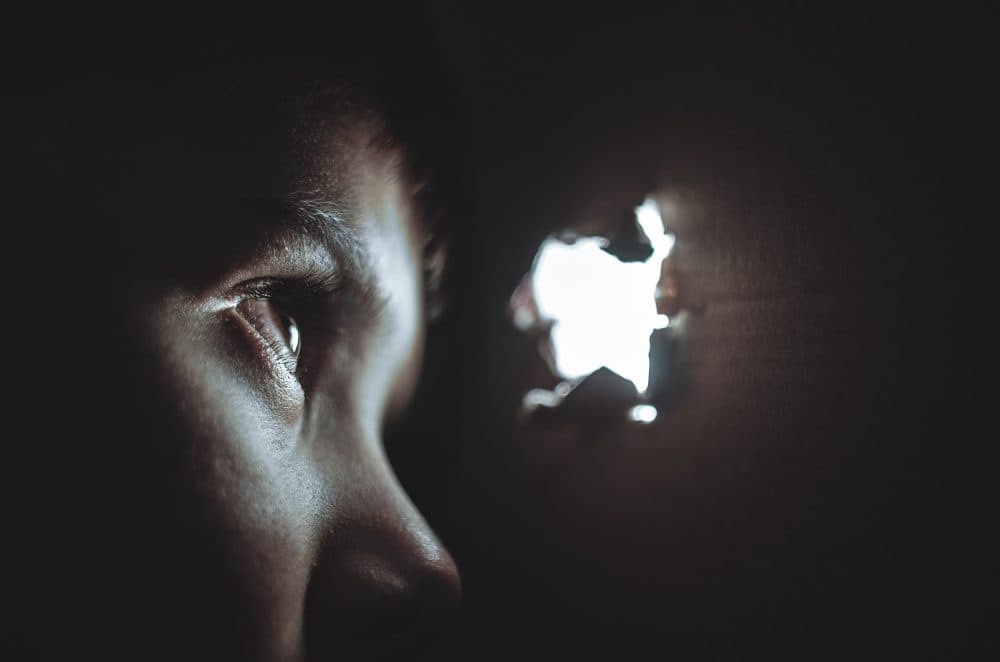Advertisement
Commentary
Why Fear — At A Distance — Helps Us Feel Safe

Until she was about 6 years old, my daughter’s favorite moment of the week came early on Wednesday mornings, when like a siren’s call, the belching rumble of the garbage truck summoned her onto our front porch. There she sat, clad in footsie pajamas, chin in palms, watching the workers as they hoisted the plastic bins over the lip of the truck’s gaping mouth, dumped out their contents, then tossed the empty garbage cans back onto the curb. She’d keep looking until an interior gate pushed the trash down the truck’s ravenous gullet, out of sight.
One day we finally asked her why she so loved watching the garbage pick-up.
“They’re not putting me in there,” was her prompt and memorable answer.
I thought of it yesterday as my Mazda slowly traversed the stations of an automated car wash with me in it. As always, I felt a pop of anxiety as the belt started to move towards the sprayers. Were the windows all shut tight? Was I hermetically sealed inside? And once the answer was clearly yes, that frisson of fear was replaced by deep satisfaction as a series of robotic devices battered my vehicle with water and soap, sprayed it with molten wax, descended upon the windshield with furry arms to buff and polish, and blasted it with hot air. The car was getting pummeled (for its own good, of course), but I wasn’t.
I love riding through the car wash as much now as I did as a child 45 years ago. It’s not that I like to be scared. On the contrary, I hate being frightened. No, like my garbage day-loving daughter, what I love is to witness danger from a place of safety.
Our sense of comfort is heightened when we feel impervious to something dangerous happening out there, ideally to nobody but certainly to nobody we know. That’s what we all appreciate about being sitting cozily inside a warm house as a Nor’easter gusts outside our windows. It’s what enterprising hoteliers on Vancouver Island have parlayed into Stormwatchers’ Specials during the violent weather season, inviting tourists to witness crashing waves and torrential rain from the therapeutic comfort of their indoor hot tub. The danger is legitimate, but generally so too is our sense of safety.
So because we know that we can’t actually be safe, we seek situations in which we can feel safe.
According to neuroscience research into the psychology of fear, “a major factor in how we experience fear is the context. When our ‘thinking’ brain gives feedback to our ‘emotional’ brain and we perceive ourselves as being in a safe space, we can then quickly shift the way we experience that high arousal state, going from one of fear to one of enjoyment or excitement.”
In other words, our response to seeing a tiger 10 feet away from us will vary dramatically based on whether we’re in a zoo or in the wild. When the tiger is behind bars, it’s a curiosity; when it’s prowling nearby on its native terrain, it’s a real threat.
“When we are able to recognise what is and isn’t a real threat, relabel an experience and enjoy the thrill of that moment, we are ultimately at a place where we feel in control,” the researchers note. “That perception of control is vital to how we experience and respond to fear.”
I find myself hungering for that sensation of control. Perhaps it’s just Halloween and the approach of winter, but I think this longing is a product of our social and political climate, not only our geothermal one. Because the fact is that many of us are deeply scared — about climate change, about health care costs, about the recklessness that our president and his hard-core supporters mistake for boldness. These threats are real and beyond our individual control.
Advertisement
So because we know that we can’t actually be safe, we seek situations in which we can feel safe.
That’s at least partially why we sit in our living rooms watching shows about Alaskan fishermen in stormy seas or truckers careening across icy lakes. And diversions that distract us from the less tangible but more pervasive threats of the time we’re in are fine with me. But as I flip the channel, I have to remind myself that the safety I feel on my couch may be just as illusory as the danger posed by a high school kid in a goblin costume working at a haunted house for $8 bucks an hour.
Ultimately I and millions of others will need to set aside the television remote, get out into the streets and parks and voting booths, and try once again to exercise some control for real.
